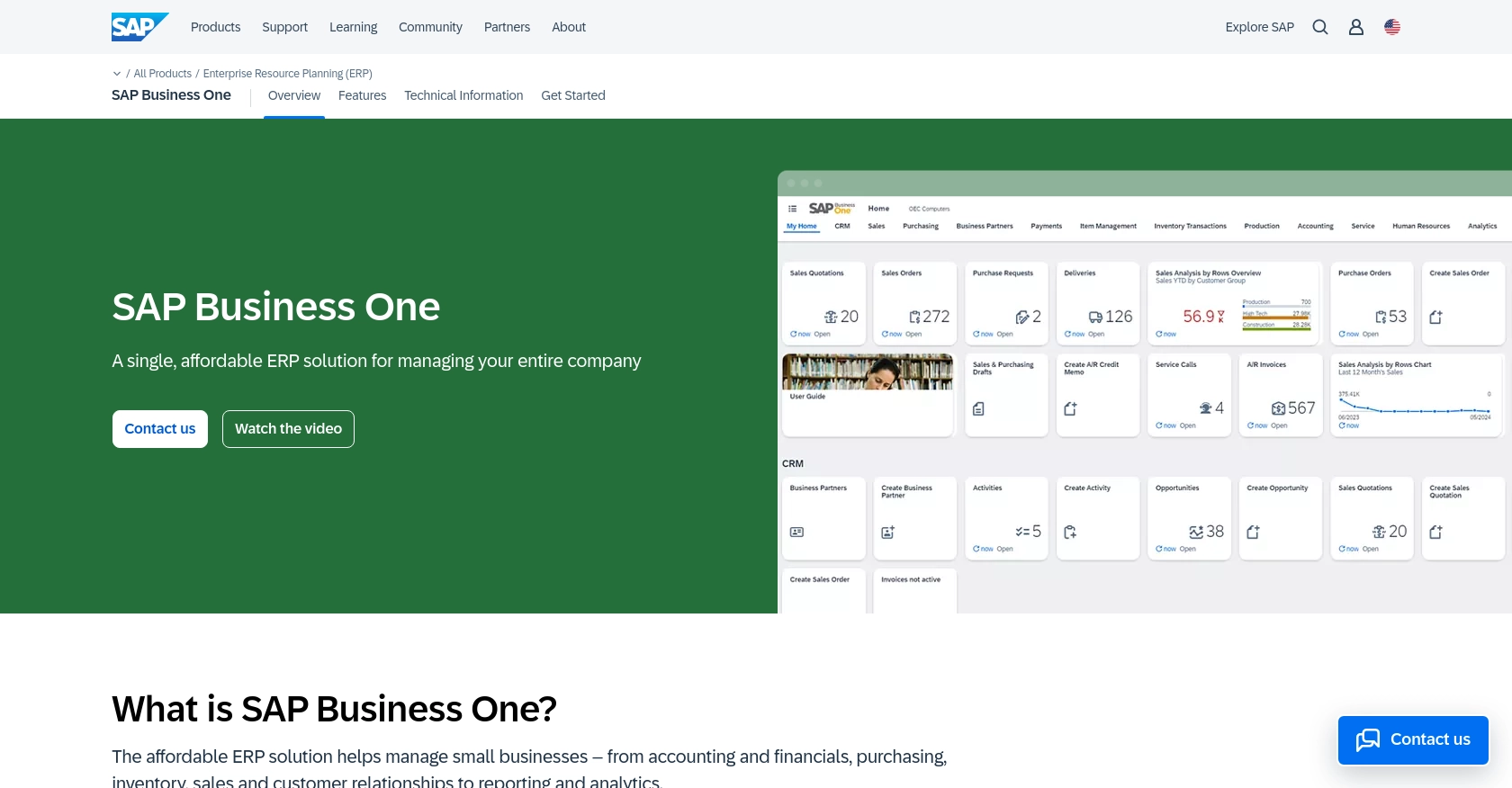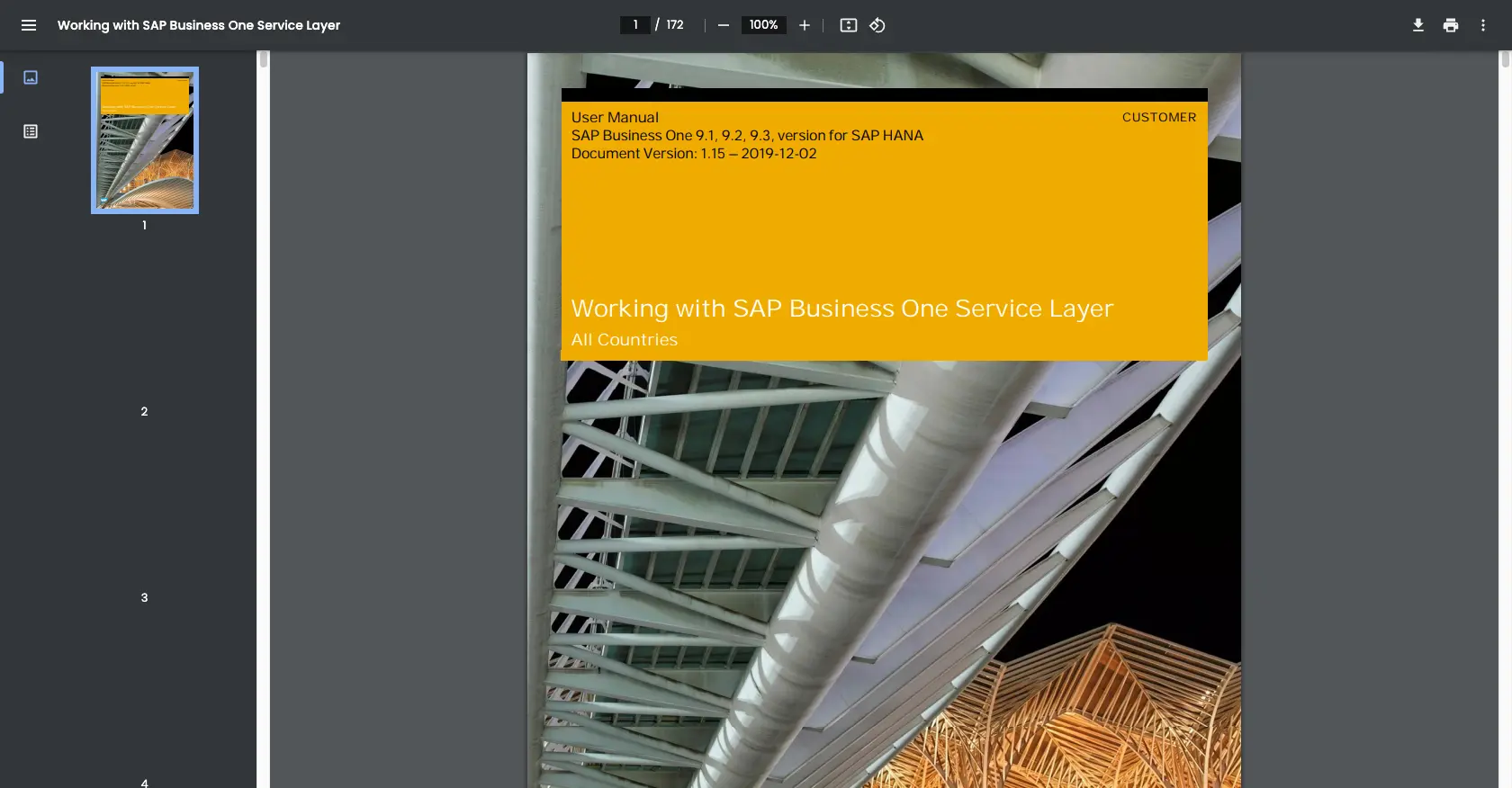Using the Sap Business One API to Create or Update Vendors (with PHP examples)

Introduction to SAP Business One API
SAP Business One is a comprehensive enterprise resource planning (ERP) solution tailored for small and medium-sized businesses. It offers a wide range of functionalities, including financial management, sales, customer relationship management, and supply chain operations. By integrating with SAP Business One's API, developers can enhance business processes by automating tasks and connecting various business functions seamlessly.
Connecting with the SAP Business One API allows developers to manage and update vendor information efficiently. For example, a developer might use the API to automate the process of creating or updating vendor records, ensuring that the data remains consistent and up-to-date across the organization. This integration can significantly reduce manual data entry and improve the accuracy of vendor management.
Setting Up Your SAP Business One Test/Sandbox Account
Before diving into the integration process with the SAP Business One API, it's essential to set up a test or sandbox account. This environment allows developers to safely experiment with API calls without affecting live data. SAP Business One provides a service layer that facilitates API interactions, and setting up a sandbox account is a crucial first step.
Creating a SAP Business One Sandbox Account
To begin, you need access to a SAP Business One instance. If you don't have one, you can request a demo or trial version from the SAP website. This will provide you with a sandbox environment to test your API integrations.
- Visit the SAP Business One website and sign up for a trial account.
- Follow the instructions provided to set up your sandbox environment.
- Ensure that you have administrative access to configure API settings and permissions.
Configuring API Access in SAP Business One
Once your sandbox account is ready, the next step is to configure API access. SAP Business One uses a custom authentication method, which requires setting up specific credentials.
- Log in to your SAP Business One sandbox account.
- Navigate to the administration panel and locate the API settings section.
- Create a new API user with the necessary permissions to access vendor data.
- Generate the required credentials, such as a client ID and client secret, which will be used for authentication.
Understanding SAP Business One Custom Authentication
SAP Business One employs a custom authentication mechanism. It's crucial to understand how this works to ensure successful API interactions. Refer to the official documentation for detailed instructions:
- Review the SAP Business One Service Layer documentation for guidance on setting up authentication.
- Ensure your API user has the correct permissions to create or update vendor records.
With your sandbox account and API access configured, you're now ready to start making API calls to create or update vendors using PHP.

sbb-itb-96038d7
Making API Calls to SAP Business One for Vendor Management Using PHP
To interact with the SAP Business One API for creating or updating vendors, you'll need to use PHP to make HTTP requests. This section will guide you through the process, including setting up your PHP environment, writing the necessary code, and handling responses and errors effectively.
Setting Up Your PHP Environment for SAP Business One API Integration
Before you begin coding, ensure your development environment is ready:
- Install PHP 7.4 or later on your machine.
- Ensure you have access to a text editor or an integrated development environment (IDE) like Visual Studio Code or PHPStorm.
- Install the
cURLextension for PHP, which is essential for making HTTP requests.
Writing PHP Code to Create or Update Vendors in SAP Business One
With your environment set up, you can now write the PHP code to interact with the SAP Business One API. Below is a sample script to create or update a vendor:
<?php
// Set the API endpoint
$endpoint = "https://your-sap-business-one-instance.com/b1s/v1/Vendors";
// Set the authentication credentials
$username = "your_api_username";
$password = "your_api_password";
// Create a new vendor data array
$vendorData = [
"CardCode" => "V12345",
"CardName" => "New Vendor",
"CardType" => "Supplier"
];
// Initialize cURL session
$ch = curl_init($endpoint);
// Set cURL options
curl_setopt($ch, CURLOPT_RETURNTRANSFER, true);
curl_setopt($ch, CURLOPT_HTTPHEADER, [
"Content-Type: application/json"
]);
curl_setopt($ch, CURLOPT_USERPWD, "$username:$password");
curl_setopt($ch, CURLOPT_POST, true);
curl_setopt($ch, CURLOPT_POSTFIELDS, json_encode($vendorData));
// Execute the request
$response = curl_exec($ch);
// Check for errors
if (curl_errno($ch)) {
echo "cURL error: " . curl_error($ch);
} else {
// Parse the response
$responseData = json_decode($response, true);
if (isset($responseData['error'])) {
echo "API error: " . $responseData['error']['message'];
} else {
echo "Vendor created/updated successfully!";
}
}
// Close the cURL session
curl_close($ch);
?>
Replace your-sap-business-one-instance.com, your_api_username, and your_api_password with your actual SAP Business One instance URL and credentials.
Verifying API Call Success in SAP Business One
After running the script, you should verify the success of your API call:
- Log in to your SAP Business One sandbox account.
- Navigate to the vendor management section to check if the vendor has been created or updated.
- If the vendor appears as expected, your API call was successful.
Handling Errors and Troubleshooting
When working with APIs, handling errors gracefully is crucial. Here are some common error codes and their meanings:
- 400 Bad Request: The request was invalid. Check your data format and required fields.
- 401 Unauthorized: Authentication failed. Verify your credentials.
- 500 Internal Server Error: An error occurred on the server. Try again later or contact support.
For more detailed error information, refer to the SAP Business One Service Layer documentation.
Conclusion and Best Practices for SAP Business One API Integration
Integrating with the SAP Business One API to manage vendor information can significantly streamline your business processes, reducing manual data entry and improving data accuracy. By following the steps outlined in this guide, you can efficiently create or update vendor records using PHP, ensuring that your organization's data remains consistent and up-to-date.
Best Practices for Secure and Efficient API Integration
- Secure Credential Storage: Always store API credentials securely, using environment variables or secure vaults, to prevent unauthorized access.
- Handle Rate Limiting: Be mindful of any rate limits imposed by the SAP Business One API. Implement retry logic and exponential backoff strategies to handle rate limit errors gracefully.
- Data Standardization: Ensure that data fields are standardized and validated before making API calls to prevent errors and maintain data integrity.
- Error Handling: Implement robust error handling to manage API errors effectively. Log errors for troubleshooting and provide user-friendly messages where applicable.
Streamlining Integrations with Endgrate
While integrating with SAP Business One can enhance your business operations, managing multiple integrations can be complex and time-consuming. Endgrate offers a unified API solution that simplifies the integration process, allowing you to focus on your core product development.
With Endgrate, you can build once for each use case and leverage a single API endpoint to connect with multiple platforms, including SAP Business One. This not only saves time and resources but also provides an intuitive integration experience for your customers.
Explore how Endgrate can help you streamline your integration efforts by visiting Endgrate's website.
Read More
Ready to get started?
